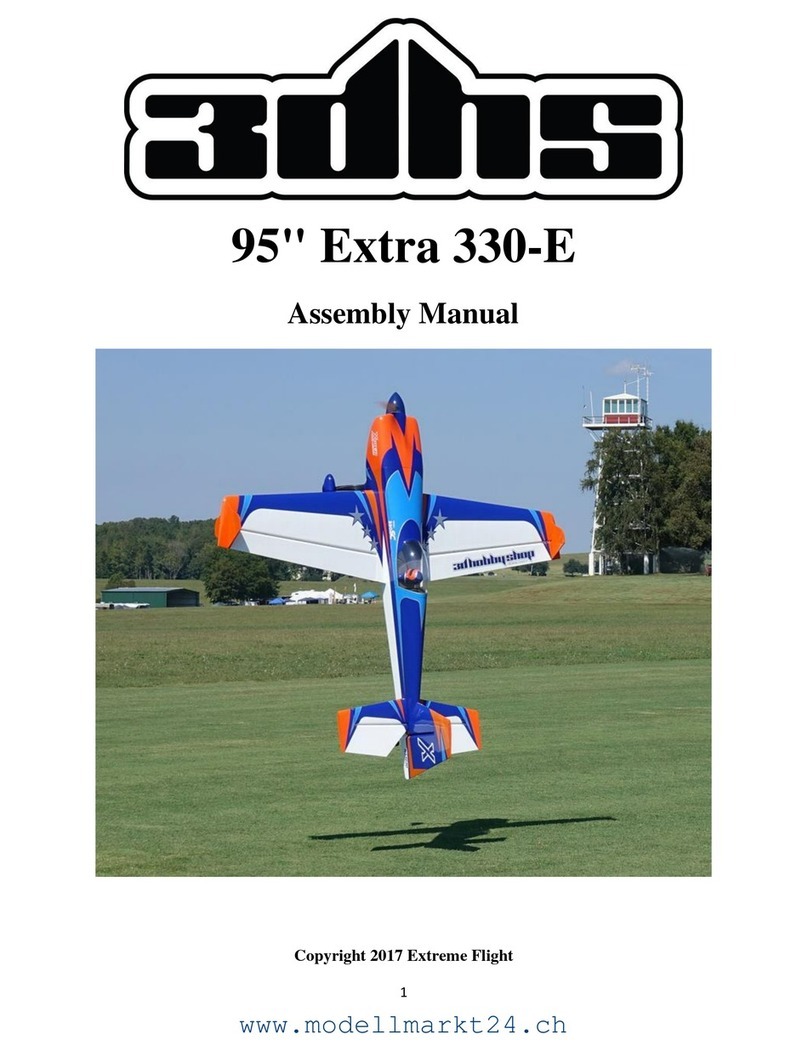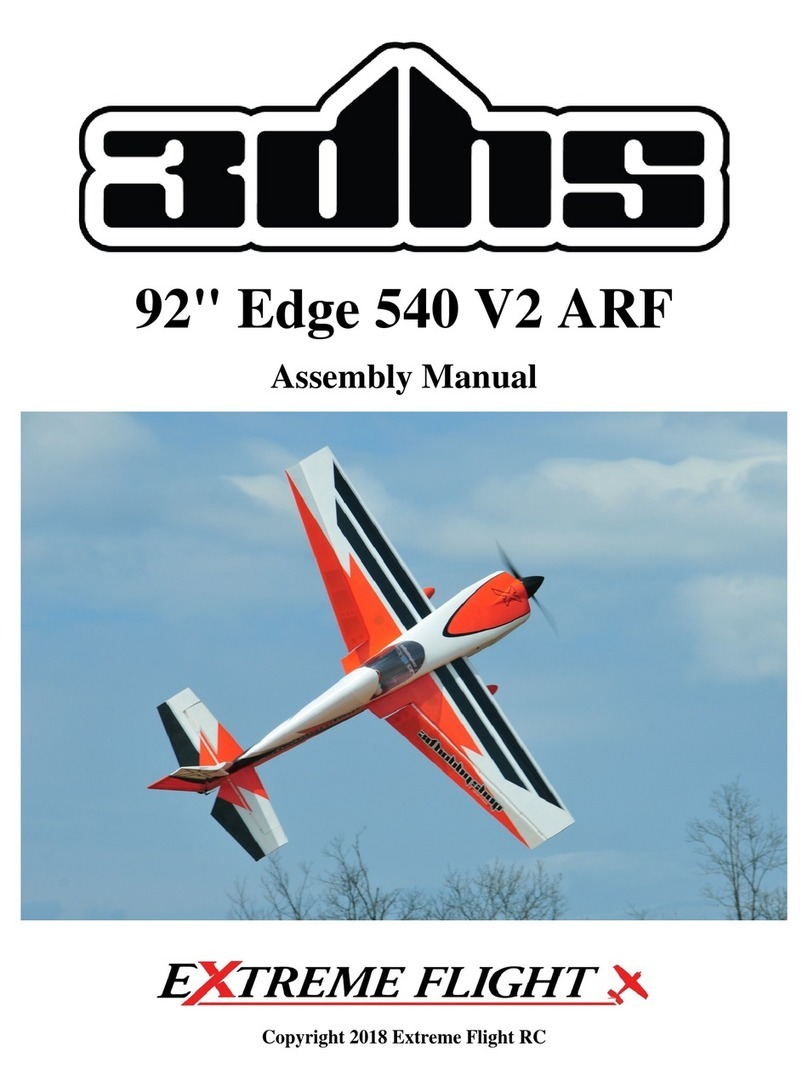SAFETY in Flying
ALWAYS fly your aircraft in a safe area, away from spectators.
ALWAYS fly your aircraft in a safe manner, within your control.
NEVER fly too close to yourself.
ALWAYS wear eye protection while operating your model aircraft.
ALWAYS keep your hands and body clear of propellers.
ALWAYS observe lipoly battery safety procedures.
ALWAYS handle gasoline in a safe manner.
ALWAYS perform a ground test and range check of your radio system before flying.
REQUIRED ITEMS
CA Glue
Canopy Glue
30 Minute Epoxy Glue (NOT 5-minute Epoxy)
Hobby Knife
Phillips Screwdriver
Set Metric Allen Wrenches
Small Pliers
Wire Cutters
Rubbing Alcohol
Paper Towels
Blue Loctite thread-locking adhesive
Dremel-type rotary tool
Small adjustable wrench or wrench set
IMPORTANT NOTE: 3DHS Recommends ONLY High-Torque, Digital, Metal-gear Servos for this
aircraft. Suitable part numbers include Hitec HS-7955TG,and HS-7954SH. DO NOT attempt to use
nylon-geared servos on this airplane.
THIS AIRCRAFT IS NOT A TOY! IT IS A HIGH PERFORMANCE AEROBATIC AIRCRAFT AND
IMPROPER SETUP AND/OR USE COULD RESULT INJURY OR DEATH.
Assembly Instructions
UNPACK
Unpack your airplane and examine the components. Check for damage of any kind. If you find any
damage, contact 3DHobbyShop and report the damage.
COVERING SEAMS
There are many seams in the covering on this aircraft where one color meets another. We recommend
using a covering iron or trim sealing tool to go over all of the covering seams on your Bigfoot. This will
help to prevent any peeling of the covering. Repeat this periodically.































